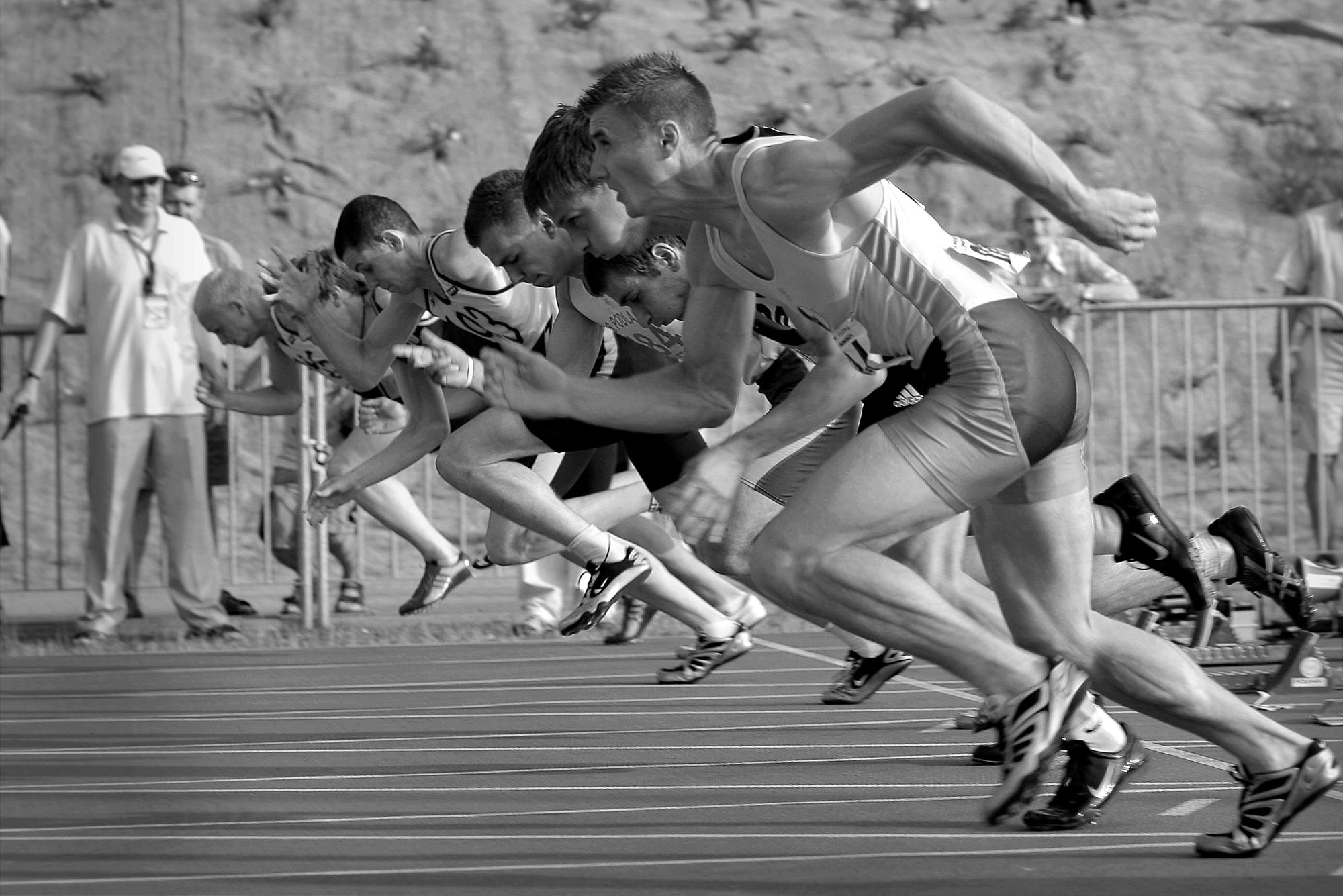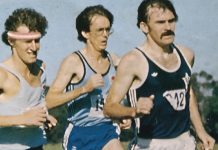‘No-one reaches his or her personal potential without facing obstacles, setbacks and challenges along the way.’ (Terry Orlick 2008)1
‘Too many runners give up on their training when they reach an age where they start slowing down noticeably. The stopwatch is a cruel master, and it can rob you of your motivation. But this is precisely the time when, because of illness associated with aging, you most need to maintain a high level of fitness’. (Amby Burfoot 1999)2
‘..persistence takes the champions ninety percent of the way. It is often referred to as tenacity and heart. It is a critical factor in performance because the moment you lose it your performance will deteriorate.’ (Rudi Webster 1984)3
‘More athletic moves go bad because they’re launched too early than because they’re too late. As a canny old pro once told me, you have to have the confidence to take the time. The complexity of this athletic truth grows on me daily.’ (John Jerome 1997)4
‘We control the quality of our days within us. Positive thinking makes good things happen.’ (Earl Fee 2005)5
‘Those with little or no commitment see setbacks as justification to abandon their dreams.’ (Jerry Lynch 1987)6
‘Most important of all is the necessity to get your mind positive….The mind can happily create a thousand things which have gone wrong or which have not been done correctly.’ (Alan Lewis 1985)7
In today’s article I examine three ‘intangibles’ of optimism, persistence and patience (OPPs) that are critical traits of a positive mindset. They are the guiding lights for a mature athlete who seeks longevity in distance running and competition. They are married to each other, yet stand alone.
Yes, they could be described as factors of resilience, a term I have come to dislike as an overused ‘catch all’ for all manner of just living life. OPPs are the glue that holds everything together as the mature distance runner faces the inevitable setbacks that will occur. They are the bedrock for determination, for it is all too easy to give in or give up.
- Why OPPs?
The reader may think this a random choice. However, I have thought long and hard about what contributes most to a positive outlook, recognising the reality of a mature person’s lot in their day-to-day life, running and non-running. Optimism, persistence and patience combined are the essence of ‘we shall overcome’.
In a running context, for a mature person who wants to compete, there are a range of considerations within a [psychological mindset|physical capacity] duality, that can be represented on a graded upwards scale as follows:
Do I want to run?|can I keep running?
Do I want to train?|can I keep training?
Do I want to race?|can I keep racing?
I have differentiated between running and training. Training infers that you likely have a race goal, whereas running purely denotes the physical act of being mobile at more than a walking pace, without any race goals. Many mature runners are happy to sit at the bottom of the scale wanting to run and keep on running, and are not too fussed about racing, but the competitive amongst us want to hit the top scale of racing and keeping on racing.
You can go up and down this scale depending on mindset and physical wellbeing. If I am seriously injured, I may drop quickly from [Yes, I want to race/Yes, I can keep racing] to [No, I don’t want to run/No, I can’t keep running] throwing my hands up in the air in despair. Alternatively, if you are an optimist, firm in adopting a positive mindset, you may drop to [Yes, I want to run/No, I can’t keep running for the time being]. So, what can I do about it? There are always qualifiers to what you may be able to do, dependent upon age and the nature/seriousness of the injury or condition, but generally you can do something.
The trick is to find that something, remain optimistic and take positive action. We have to be realistic that age and concomitant incapacity, whether through injury or other reasons, may come upon us. And although typically when your racing ego gets too big your body smacks you down – it is the great leveller – we can draw upon our patience and persistence in the long haul back to full race fitness.
At times, it can feel like you are always coming back. The challenge is in the ‘getting back’ and the deep satisfaction of ‘overcoming’.
- Digging Deeper
Many, many years ago Runners World publications oft quoted the research of Drs Ogilvie and Tutko and the development of their Athletic Motivation Inventory.8 They described a range of qualities of ‘Championship Character’, highlighting determination as one such quality – and within this quality described traits such as ‘Persevering, even in the face of great difficulty’ and a requirement to be ‘Patient and unrelenting in his work habits.’9

International Cross Country Championship (9 miles) held at Bermingham. A perennial
silver medallist to Zatopek in major Games, he was to finally achieve gold in the 1956
Melbourne Olympic marathon. He competed regularly into his very mature years. Source:
World Sports, The International Sports Magazine, May 1954, Vol 20 No 5, photographer
unknown.
2.1 Is it Persistence or Perseverance?
When preparing this article, I noticed that some practical philosophers use persistence and perseverance interchangeably. This caused me to pause, to understand if a difference exists between the two terms. And lo and behold it is so. I came across the teachings of Christopher Mance, American sports psychologist and mental skills coach.10
He states that persistence is ‘simply the act of pursuing a course of action with the same energy and consistency’, while perseverance is ‘the ability to maintain the same energy and consistency through the process of overcoming painful circumstances’ [authors italics]. I note with pride that my friend ‘consistency’ appears within his definitions of both terms. We can never underestimate the importance of consistency to maintain performance and overcome obstacles. For nothing ever happens if you don’t do something.
Summarising Mance, he explains that ‘persistence in the absence of pain is nothing special’ and once the pain of failure, fatigue, boredom, fear or trauma becomes part of the process it takes more than persistence to continue a particular course of action, it takes perseverance. And perseverance requires the use of willpower not to quit and/or not give less effort. He concludes that ‘a persistent person can be stopped but a person who is both persistent and who has the will to persevere is unstoppable.’
Within some theories of motivation persistence is considered to be a key component and can be defined as ‘the continued effort toward a goal even though obstacles may exist.’11 However, this definition appears to contradict the distinction Mance makes between persistence and perseverance, where he attaches the overcoming of obstacles and exertion of willpower moreso to perseverance. A fine distinction to make, maybe one for the academics to mull over?
View this post on Instagram
So, to my way of thinking, perseverance sits on the shoulders of the base trait of persistence. And if obstacles do not exist, it doesn’t mean it is any less demanding to maintain a commitment to continue doing what we need to do to be successful. When all is said and done, persistence requires discipline and is the first step towards perseverance.
2.2 Optimism
Under the quality of mental toughness Ogilvie and Tutko list the trait of ‘Can bounce back quickly from adversity’.12 Though this may fall under mental toughness (or even resilience) I would argue it is a central trait of the eternal optimist. The latter is someone who always sees the good in people and situations.
The dictionary definition of optimism is ‘hopefulness and confidence about the future or the success of something’ while positivity is ‘the practice of being, or tendency to be positive or optimistic in attitude.’
Together optimism and positivity breeds confidence, in oneself and to overcome an adverse situation you may face, or simply to maintain the status quo by maintaining a consistent effort. So, you can see that even optimism requires an underlying level of discipline.

disciplined trainer and had to overcome a significant injury immediately prior to an Olympic win
that was many years in the making. Still competing to a high level in her sixties. Credit: Jeff Johnson.
2.3 Patience
Patience is a curious thing. It is like a mothering of your psyche; reminding you that you will get there in the end, achieve your goals and be satisfied with your performance only if you take the time to look after yourself along the way. It requires a clear understanding of where you are heading and why you are persisting. The answer to the latter can be explained by where you currently sit on the graded scale and what you really aspire to. Its about the mix and match of the psychological and physical as you focus on that something that you need to do to progress, however you want to define it.
Patience presents a particular challenge for a mature distance runner, for as Tim Grover says ‘the biggest mistake in life we make is thinking we have time.’13 The underlying urgency we feel to get back quickly has to be smoothed by a common-sense approach, to prevent the ‘one step forward two steps back’ outcomes that generate frustration in the aging athlete.
Ultimately, you need to be persistent, but you can’t rush it.
- What does it all mean?
I note that in their testing Ogilvie and Tutko measured 11 qualities they considered most important for championship character within their Athletic Motivation Inventory and identified a massive 55 traits underpinning these qualities.14 And I have chosen but three. Why? Well, I think the OPPs are the most effective traits for a mature distance runner. They are the wisest, and only sustainable way, to counter the ‘time is of the essence’ quandry we can find ourselves in as we age.
With our higher need (than the younger set) to overcome a range of running and non-running specific lifestyle factors, often complex, the OPPs are the critical base traits to the development of racing success or a championship character for the mature competitor. They steady the ship of our mature running lives, keeping our souls anchored in what we need to do, as the clock keeps ticking.
You can’t see these intangibles, or touch them, but you can hear them, echoing in your head as a reminder of what you have to do, that something. They are as concrete as the roads and tracks you run on. They are the fabric of your running psyche. The truly great distance runners nurture these traits when young, develop them throughout their lives, and hang onto them for as long as they can, whether still running or not, into their later years. For without them everything else falls apart.
- Concluding Comments
As we age, we can always find an excuse not to run, but there is rarely a good reason not to try. To run is not a matter of obligation. If you think it is, then you are unlikely to continue. Examining the OPPs took us to some other places like determination, discipline, confidence, consistency and understanding what we need to do, identifying that something that keeps us running.
The OPPs are always there, during in the moment racing challenges and as part of your long-haul training routine. The careers of Mimoun and Benoit-Samuelson are proof enough.
Optimism, patience, persistence. If you get them right, you can’t go wrong as you work the scale for you and navigate towards a longer lasting running and/or competition journey.
All I can say is, when it comes to OPPs, there are no excuses, only a path to achievement, and to finding that something, whatever that means to you.
References:
- Orlick, T, In Pursuit of Excellence, 2008, p4
11. Cherry, K, Motivation: The Driving Force Behind our Actions, verywell mind, 3 May 2023, available here.
12. Henderson, 1972, p10
13. Grover, T, Winning, 2021, p216.
14. Henderson, 1972, pp9-11


















